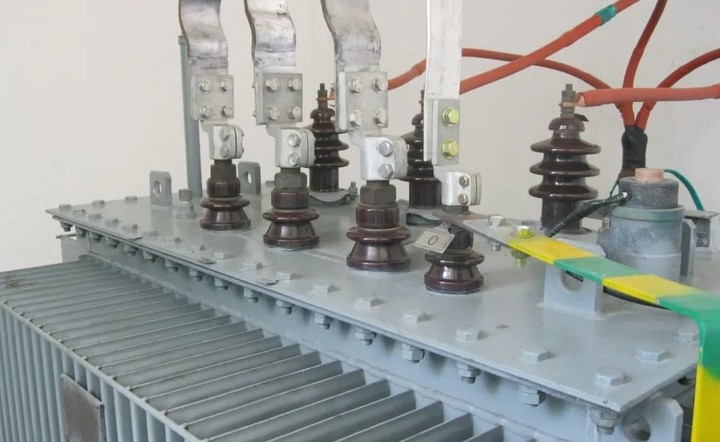Key points of transformer lamination operation
Writer: Hengfeng you electric Time:2023-04-23 views:times
Today, Hengfengyou Electric will introduce to you the key points of transformer lamination operation:
1. Familiar with the drawings and quality requirements, prepare the materials, spare parts, tools and tooling needed in the lamination process;
2. Scrap parts with out-of-tolerance or unqualified dimensions;
3. Wipe the upper and lower splints with a cloth, and put the clips, insulation and sealing sheets. Shop 1 auxiliary channel steel of 125KVA and below, and 2 shop above 125KVA, intersperse the auxiliary channel steel with the iron core sealing sheet. A piece of flat steel should be placed in each position. The auxiliary channel steel above 630KVA should not block the pull screw holes at both ends of the clamp. Note that the upper and lower clamps and the upper end surface of the auxiliary channel steel should be on the same plane and kept level.
4. Use a tape measure to measure the parallelism and diagonal of the upper and lower splints within 1mm.
5. When stacking iron cores, two pieces are generally used in a stack, and the central pillar pieces are placed in the order of "middle, left, and right", and every three layers is a cycle. When the thickness is greater than 15mm, the end face of the iron core should be flattened by copper or bakelite to reduce the joints, eliminate the unevenness of the overlap and the end face, and carry out shaping and self-grinding. Inspection of.

6. Pay attention to the thickness of the sheet when lamination. When there are iron filings with uneven thickness, they should be evenly separated and placed on the top of the uneven core column to avoid stacking core columns with different thicknesses. If necessary, use three stacks on the thinner side. When measuring the thickness of each layer with a vernier caliper or a steel ruler in a compressed state, the thickness should conform to the drawing rules, pay attention to leaving a certain margin, and the thickness of the main layer should have a positive error.
7. Better bed sheets should be used for the upper and lower cover pages of each layer. It is important to note that the upper yoke must all use better sheets, and each layer with creases or uncoated sheets must use better sheets. Open.
8. When the stack reaches the last three layers, temporarily tighten the iron core and measure the total thickness with a caliper. Adjust the stack thickness of the last three stages according to the error, so that the total thickness is controlled within +2mm, and carry out a comprehensive inspection and shaping.
9. Put other parts of the clips, insulators, feet, etc., and be careful not to get the wrong direction. When tightening the screw nut, pay attention to both ends of the screw and adjust it once. The length of the lower end of the lag screw must not exceed the length of the foot. The mouth of the paper tube should be flat, with the same length, and should not be clamped.
10. The stepping block should be made of dry mixed wood. If it is not suitable, it should be trimmed to make it close to the end face of the lower yoke of the iron core.
11. When clamping the iron core, clamp the screw first, and then tighten the pull screw; first in the center, then at both ends.
12. After the experiment is over, the iron core columns that need to be bundled shall be bundled with non-lattice belts or crimping belts, and they shall be evenly shared without any floating heads.
13. Blow the core body with compressed air, and then brush a layer of polyurethane varnish on the end of the core column and the lower yoke. Be careful not to paint the upper yoke and the core post close to the upper yoke, and be careful not to drip paint on the clamp and iron. On the chip.
14. Apply a layer of anti-rust oil on the unpainted end surfaces of the upper yoke and the stem.
15. It is strictly forbidden to step on the film with your feet. When picking up the film, handle it gently, and don't bump or knock it.
16. If the film has curled edges, flatten it with a hammer before use. Pay attention to the uniformity of the edges and corners when lamination.
17. Pay attention to safety when lifting the iron core to avoid the iron core from being scattered and the core column to be distorted and deformed.
18. When splicing, each layer of splicing seams should be staggered. There should be no splicing seams at the part where the core column is more than 100mm away from the upper yoke, and the upper yoke should not be spliced or welded.
19. The remaining material of the laminated board should be marked with the customer number, model, trademark, board width, thickness, etc. on the first board above, and the material management personnel will put it on the shelf.
20. If the iron core is not folded before the end of the operation or when the shift is transferred, the uppermost iron piece should be pressed with a weight of a certain weight when the channel is closed.
The above is the relevant explanation of Hengfengyou Electric on the key points of transformer lamination operation. If you still don’t understand, you can call +86 15853252696 for further consultation. For comparison, we also provide other setting instructions for oil-immersed transformers. Many users learn more.

